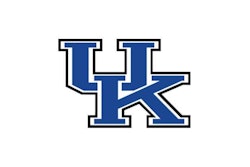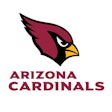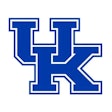In reviewing whether an employment relationship exists, the real issue for the courts is control.
Since an employer is only vicariously liable for the actions of his or her employees, one method by which athletics administrators have tried to reduce or transfer their legal exposure is through the use of independent contractors to perform duties traditionally performed by employees. The success or failure of such a gambit - and it is often successful, in a legal sense - typically hinges on who is deemed to exert control over the independent contractor in question. The issue is particularly acute with regard to sports officials: If a sports official is deemed an employee of an organization, the organization may be held liable for any injuries that result from the official's failure to intervene in dangerous on-field incidents or stop certain behaviors on the part of athletics participants.
A good recent example involved the Superior Court of Connecticut's decision in Peter Zajaczkowski v. Connecticut State Soccer Association [2010 Conn. Super. LEXIS 435]. Zajaczkowski, a member of the Polonia Stamford soccer team (part of the Amateur Soccer League of Connecticut, which plays under the jurisdiction and control of the Connecticut State Soccer Association), was playing in an adult soccer game at West Beach Field in Stamford, Conn.
During one game, Zajaczkowski was injured by the opposing goalkeeper's sliding tackle after he scored a goal. Two witnesses who saw the play said that as Zajaczkowski struck the ball, the keeper was falling down and sliding simultaneously in the act of trying to grab the ball. Zajaczkowski, however, claimed that after he scored the goal, the goalkeeper - who could have avoided contact with his leg, Zajaczkowski said - charged him and tackled him by sliding into his leg. Zajaczkowski suffered various injuries, including a broken right leg.
As a result of his injuries, Zajaczkowski sued the CSSA and ASLC. He claimed that the two organizations were negligent because they 1) allowed the game to be played on a field that had a substandard playing surface; 2) failed to properly officiate the game to eliminate violent or improper behavior of players that was likely to cause injury to other players; and 3) failed to properly train and supervise the officials that they provided to referee the game. The City of Stamford, which owned the field, the goalkeeper who tackled Zajaczkowski and the referee who supervised the play were not named as defendants in this case.
In their motion for summary judgment, the two organizations argued that 1) they could not be held liable because they did not own or maintain the playing field where the soccer match was held; 2) any alleged negligence by the CSSA and ASLC was not the proximate cause of Zajaczkowski's injuries; 3) even if the referee was negligent, neither organization could be held vicariously liable, as the referee was an independent contractor, rather than an employee; and 4) neither organization had a duty to train the referee because the referee was an independent contractor.
In dismissing Zajaczkowski's first claim, the Superior Court of Connecticut held that liability for injuries occurring on real property is grounded in possession and control of the property. Therefore, since the court found that the City of Stamford owned, possessed and controlled the playing field, and was responsible for repairing and maintaining the field, the CSSA and ASLC could not be negligent for any injuries resulting from the field.
In reviewing Zajaczkowski's second argument, that the defendants did not provide adequate referees or safeguards to prevent his injury, the court held that the claim was predicated on the assumption that the keeper and other players were demonstrating unsportsmanlike behavior prior to the collision, which the referee failed to stop. However, since Zajaczkowski conceded that neither he nor anyone else complained to the referee or did anything prior to the collision to alert the referee that play had become too aggressive, the court ruled that as a matter of law, the referee's actions and those of the defendants were not the proximate cause of Zajaczkowski's injuries.
Finally, the court addressed the CSSA and ASLC's argument that they could not be vicariously liable for the alleged negligence of the referee because the referee was an independent contractor - and, as such, they had no duty to train or supervise him. Vicarious liability, the court held, is premised upon the common-law notion that an employer exerts control over an employee acting within the scope of employment. It is as a result of this control that the theory of vicarious liability allows employers to be subject to liability for the physical harm caused by the negligent conduct of their employees. By contrast, an employer is presumed to have no control over the manner in which work is performed by an independent contractor.
The court concluded that the referee in Zajaczkowski was not an employee of either the CSAA or ASLC. In support of its decision, the court noted that the referee was not trained by either organization; he had attended clinics conducted by the United States Soccer Federation. Nor was the referee paid by either organization; he was paid by the home team on a game-by-game basis. Finally, the court noted that the Connecticut State Referees Program, an organization separate and distinct from the CSAA and ASLC, recruited referees who then were assigned to matches. Any referee could choose or decline to work a particular soccer match. Once assigned to a match, the decision to play the game and to inspect the field, as well as the enforcement of the rules of the game, are up to the discretion of the individual referee. Under these circumstances, the court ruled, neither defendant exercised any control over the referee.
While the court found that the referee in Zajaczkowski was an independent contractor, the issue may not be so clear-cut for sport facilities that hire their own officials. As the court held, the real issue is control. In reviewing whether an employment relationship exists, the courts examine 1) whether the alleged employer has the right to direct and control the work of the individual; 2) whether the person is engaged in a distinct occupation; 3) who, among the employer or individual, supplies the tools and place of work; and 4) the method of paying the individual. Finally, note that the labels used by the parties in referring to their relationship are not the deciding factor. Rather, a court will look to the operative terms of their agreement.
































